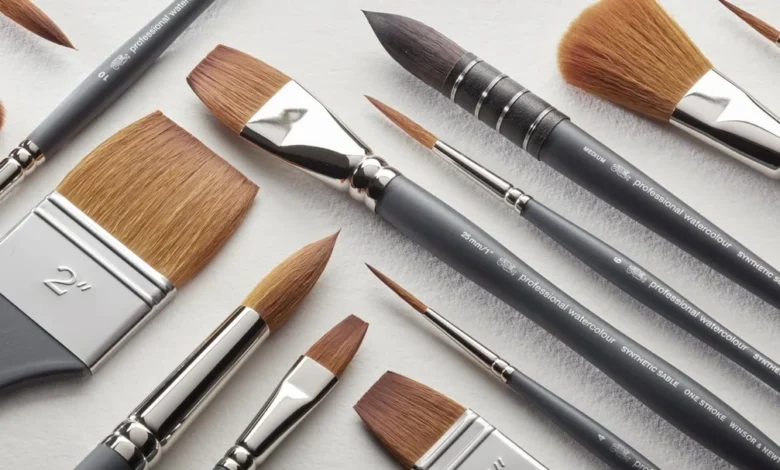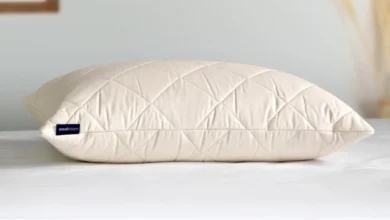Synthetic vs. Natural Bristles: Which Brush Material Wins?

Choosing the right brush is key to achieving great results in painting, renovations, or art projects. The choice between synthetic and natural bristles impacts application quality, durability, and cost. Advances in synthetic materials and environmental concerns have reshaped this decision, making it crucial to match your brush to the task for better efficiency and results.
Understanding Natural Bristle Brushes
Natural bristles come primarily from animal hair, with hog bristles being the most common choice for painting applications. These bristles offer unique characteristics that have made them the preferred choice for oil-based paints and stains for generations.
The structure of natural bristles creates tiny splits at the tips, called flags, which help hold more paint and create smoother application. This flagging action allows for better paint flow and reduces visible brush marks, particularly important when applying oil-based finishes to cabinets or trim work during kitchen renovations.
Hog bristles excel with oil-based products because they maintain their shape and flexibility when exposed to the solvents in these paints. The natural oils in the bristles complement oil-based formulations, creating an ideal pairing that professional painters have relied on for decades.
However, natural bristles have limitations. They absorb water readily, which causes them to swell and lose their shape when used with water-based paints. This swelling creates a floppy, uncontrollable brush that produces poor results and frustrating application experiences.
See also: Why Concrete Coating is Essential for Extending the Lifespan of Driveways and Sidewalks
The Rise of Synthetic Bristle Technology
Synthetic bristles, typically made from nylon, polyester, or nylon-polyester blends, represent decades of material science advancement. Modern synthetic bristles can mimic many characteristics of natural bristles while offering additional benefits that make them increasingly popular among both professionals and DIY enthusiasts.
Nylon bristles provide excellent flexibility and durability, making them ideal for detailed work and smooth finishes. They maintain their shape well and resist wear, even with frequent use. Polyester bristles offer superior spring-back and maintain their original shape better than nylon, particularly in high-temperature applications.
The newest synthetic formulations combine multiple materials to create bristles with engineered properties. Some feature hollow cores for increased paint capacity, while others include textured surfaces that mimic the flagging of natural bristles.
Synthetic bristles perform exceptionally well with water-based paints, latex formulations, and acrylic finishes. They don’t absorb water, maintaining their intended shape and stiffness throughout the painting process. This consistency makes them particularly valuable for precision work like painting trim or creating clean lines around fixtures during bathroom updates.
Performance Comparison Across Applications
Paint application reveals the most significant differences between bristle types. Natural bristles create superior results with oil-based paints, stains, and varnishes. The natural flagging and paint-holding capacity of hog bristles produce smooth, even coverage with minimal brush marks.
Synthetic bristles dominate water-based applications. Their resistance to water absorption means they maintain consistent performance from start to finish. When painting walls with latex paint during interior renovations, synthetic brushes provide better control and more predictable results.
Durability varies significantly between the two options. High-quality natural bristles can last for years with proper care, but they require more maintenance and are susceptible to damage from improper cleaning or storage. Synthetic bristles typically offer greater durability and easier maintenance, though the highest-quality natural brushes often outlast their synthetic counterparts when used appropriately.
Cost considerations extend beyond the initial purchase price. Natural bristle brushes generally cost more upfront but may offer better value for professionals who use them regularly with appropriate paint types. Synthetic brushes provide excellent value for occasional users and DIY projects, particularly given their versatility across different paint formulations.
Specialized Applications and Considerations
Certain applications strongly favor one bristle type over another. Fine woodworking and furniture finishing typically benefit from natural bristles, which provide the smooth application essential for high-quality finishes. The superior paint flow and leveling characteristics help achieve professional-looking results on visible surfaces like cabinet faces or furniture pieces.
Synthetic bristles excel in challenging conditions. They resist temperature extremes better than natural bristles and maintain their performance characteristics in humid environments. This makes them ideal for exterior painting projects or applications in basements and other moisture-prone areas.
Precision work often favors synthetic bristles due to their consistent performance characteristics. When painting around fixtures, creating clean edges, or working on detailed trim work, the predictable behavior of synthetic bristles provides better control and more consistent results.
Environmental factors also influence bristle performance. Natural bristles can become brittle in very dry conditions or overly soft in humid environments. Synthetic bristles maintain more consistent properties across varying environmental conditions, making them more reliable for projects that span multiple days or weather conditions.
Maintenance and Longevity
Proper care significantly affects the lifespan and performance of both bristle types. Natural bristles require more careful maintenance, including thorough cleaning with appropriate solvents and careful storage to prevent damage. They benefit from occasional conditioning with oils to maintain flexibility and prevent brittleness.
Synthetic bristles generally require less specialized care but still benefit from thorough cleaning and proper storage. They resist damage from aggressive cleaning methods and recover their original shape more readily after use.
Storage considerations differ between bristle types. Natural bristles should be stored in breathable containers to prevent moisture buildup, while synthetic bristles can tolerate less ideal storage conditions without significant performance degradation.
The investment in proper brush care pays dividends in both performance and longevity. A well-maintained brush, regardless of bristle type, provides better results and represents better value than repeatedly purchasing inexpensive brushes that are discarded after single use.
Making the Right Choice for Your Project
Project requirements should drive your bristle selection decision. Oil-based paints, stains, and traditional finishes generally perform best with natural bristles. Water-based paints, latex formulations, and modern synthetic finishes typically work better with synthetic bristles.
Consider your experience level and project frequency. Occasional users often find synthetic brushes more forgiving and easier to maintain, while professionals working regularly with specific paint types might prefer the performance characteristics of natural bristles matched to their typical applications.
Budget considerations extend beyond the brush cost to include paint waste, time investment, and result quality. A slightly more expensive brush from a custom brush manufacturer that provides better results and requires fewer coats can offer superior overall value compared to a cheaper option that compromises the final outcome.
Conclusion
Natural and synthetic bristles each have their strengths: natural bristles work best for oil-based finishes, while synthetic bristles excel with water-based applications and versatility. Building a collection of both ensures you’re prepared for any project, helping you achieve better results and make the most of your tools.





